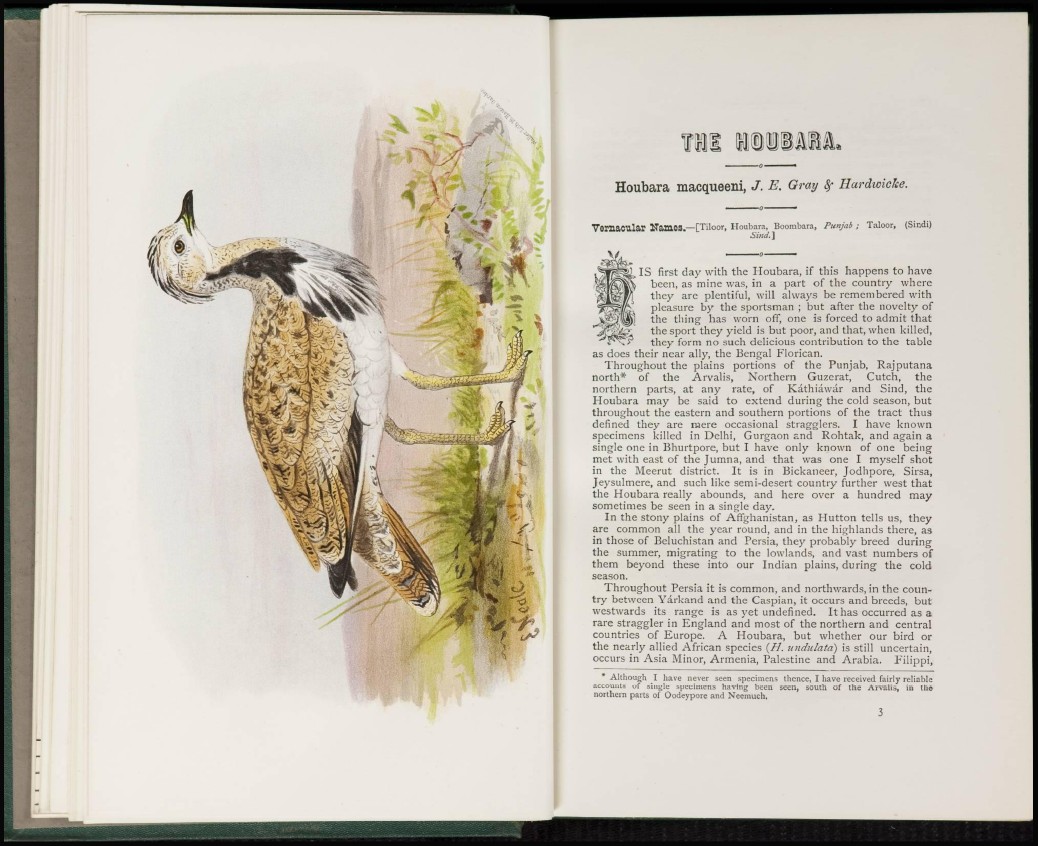
i n M i i jm
Houbara macqueeni, J . E . G R A Y H A R D W I C K E.
Vernacular Names.—[Tiloor, Houbara, Boombara, Punjab ; Taloor, (Sindi)
SIRTD. ]
I S first day with the Houbara, if this happens to have
been, as mine was, in a part of the country where
they are plentiful, will always be remembered with
pleasure by the sportsman ; but after the novelty of
the thing has worn off, one is forced to admit that
the sport they yield is but poor, and that, when killed,
they form no such delicious contribution to the table
as does their near ally, the Bengal Florican.
Throughout the plains portions of the Punjab, Rajputana
north* of the Arvalis, Northern Guzerat, Cutch, the
northern parts, at any rate, of Kathiawar and Sind, the
Houbara may be said to extend during the cold season, but
throughout the eastern and southern portions of the tract thus
defined they are mere occasional stragglers. I have known
specimens killed in Delhi, Gurgaon and Rohtak, and again a
single one in Bhurtpore, but I have only known of one being
met with east of the Jumna, and that was one I myself shot
in the Meerut district. It is in Bickaneer, Jodhpore, Sirsa,
Jeysulmere, and such like semi-desert country further west that
the Houbara really abounds, and here over a hundred may
sometimes be seen in a single day.
In the stony plains of Affghanistan, as Hutton tells us, they
are common all the year round, and in the highlands there, as
in those of Beluchistan and Persia, they probably breed during
the summer, migrating to the lowlands, and vast numbers of
them beyond these into our Indian plains, during the cold
season.
Throughout Persia it is common, and northwards, in the country
between Yarkand and the Caspian, it occurs and breeds, but
westwards its range is as yet undefined. It has occurred as a
rare straggler in England and most of the northern and central
countries of Europe. A Houbara, but whether our bird or
the nearly allied African species {H. undulata) is still uncertain,
occurs in Asia Minor, Armenia, Palestine and Arabia. Pilippi,
* Although I have never seen specimens thence, I have received fairly reliable
accounts of single specimens having been seen, south of the Arvalis, in the
northern parts of Oodeypore and Neemuch.